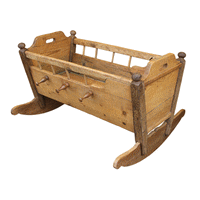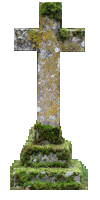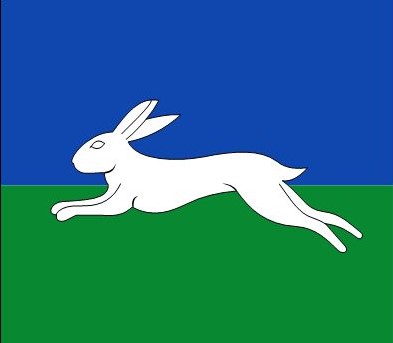Genealogy Hasker, Afuang, Ybardolaza and related family
 Genealogy Hasker, Afuang, Ybardolaza and related family
Genealogy Hasker, Afuang, Ybardolaza and related family
Welcome to the family tree page of the Dutch family Hasker.
To start with a bummer: as far as I can tell, the surname Hasker has nothing to do with the former municipality Haskerland (Frisian: Haskerlân). In fact, instead of 'Landowner', the terms 'Beggar', 'Almshouse', 'Colonies of Benevolence' and 'Proof of Inability' do occur. Unfortunately, “Too good to be true”.
Actually, it comes down to the fact that the Haskers have a very boring history, until now no celebrities such as e.g. actors/actresses, pop stars or athletes. It is also a very small, manageable family. In 1947 in the Netherlands, there were 24 and in 2007 38 persons with Hasker as their surname. The origin lies in Leeuwarden . At the beginning of the last century, the family was "split" into the 'Frisian branch' and the 'Brabant branch'. It is striking that despite enough children being born, there were always only 1 or 2 male descendants who provided for offspring, resulting in the small number of Hasker surnames. Changing the surname Hasker to Builsma did not help either. 😉
. At the beginning of the last century, the family was "split" into the 'Frisian branch' and the 'Brabant branch'. It is striking that despite enough children being born, there were always only 1 or 2 male descendants who provided for offspring, resulting in the small number of Hasker surnames. Changing the surname Hasker to Builsma did not help either. 😉
There are quite a few people worldwide with Hasker as their surname. How did they get it? No idea. In America, many Haskers are descended from the German emigrant Heinrich Hasker. The surname Hasker is also common in Great Britain, in London (GBR) there is even a Hasker St.
Hasker
The oldest direct ancestor using Hasker as a surname is Jan Jans (Jan Janzen Hasker)(1728-1807). At birth he was called 'Jan'. His father would then probably have been called Jan or Johannes. Long before the introduction of civil registration by Napoleon in 1811, the marriage certificate from 1770 with 'Trijntie Jurjens' shows the name 'Jan Janzen Hasker'. Sadly, the name adoption registers(Dutch: Register van naamsaanneming) of Leeuwarden were lost in a fire and it is not possible to determine when he adopted the surname. Presumeable at his marriage.
I know something is wrong in the tree around 1750 but I can't find out exactly what the connections are. There is a relationship, besides witnesses, with a Johannes Jans Hasscher. Besides (his?) a daughter 'Janneke Jans Haske', he had a son, Jan Johannes, later a baker in Wytgaard (Frl). This Jan Johannes also had a son, Johannes Jans, where Johannes Hasscher is mentioned as a witness (paternal grandfather) on the baptismal certificate. On his marriage certificate (1809) this Johannes Jans signed as Johannes Jans Hasker. Until 1811 he was a baker's apprentice in Huizum (on 'de Schrans no 97'). In 1811, he became a master baker in Wytgaard and changed his name to Johannes Jans Builsma at the beginning of 1812. Huh, what was wrong with Hasker? 😉
Because there was no civil registry until 1811 and no family name (surname) was required and half of the men were called Jan or Johannes, it is difficult to prove the relationship. There were surnames, but they were reserved for wealthy families, elite, and nobility.
All Haskers in the Netherlands descend from one branch of the family tree, the brother of Jan Johannes, Jurjen Jans Hasker (1781-1846). Sadly, the qualifications mentioned above apply to this Jurjen.
Until 1811, it was customary to use a patronymic as a “surname”. A patronymic or father's name is a name, whether official or not, that indicates the name of the father of the bearer of the name. Examples are Johannes Jans(s)en (son of Jan), Claes Willems(en) (son of Willem), Piet Hendriks (son of Hendrik) etc.
Afuang and Ybardolaza
Although the base is the Hasker family, a part of this website is represented by the Filipino surnames Afuang and Ybardolaza. These child-rich families have their origins in Paete and Pakil
and Pakil in the province of Laguna(PHL).
in the province of Laguna(PHL).
Just as Napoleon introduced civil registration in the Netherlands, in the Philippines it was the Spanish governor-general Narciso Clavería y Zaldúa who made surnames mandatory in 1849 (Claveria Surname Decree). The country was divided into regions and if you did not have one, your new surname had to start with the letter designated for that place/region. That is why many surnames in Paete start with the letter A. In the Malinao(Aklan) region on the island of Panay , the surname had to start with a Y(IJ), therefore many Ybardolasas living there. Some will have moved to Pakil and 'the rest is history'. What is striking is that Ybardolaza was originally written with an 's' and not a 'z'. Even on Maura Ybardolaza's birth certificate, it is written with an 's'.
, the surname had to start with a Y(IJ), therefore many Ybardolasas living there. Some will have moved to Pakil and 'the rest is history'. What is striking is that Ybardolaza was originally written with an 's' and not a 'z'. Even on Maura Ybardolaza's birth certificate, it is written with an 's'.
After 1850, the naming rules also changed. The mother's surname became the 'middle name', and the father's middle name became the official surname. Such is the case with Ybardolasa. The oldest Ybardolasa found is Francisco Ybardolasa Marcelo. Among his grandchildren, the name Marcelo has disappeared. Same happened with Vicente Afuang dela Cruz. Dela Cruz was deleted. To make it more complicated, the rule was applied different within families, depending the year of birth from the child. Unfortunately, for genealogists this is a tragedy and the family tree around that period is almost impossible to follow.
Disclaimer
This site is continuously subject to changes. More scans, names, and dates will be added.
In the context of the Personal Data Protection Act, living or possibly living persons are shielded. If you discover that you are one of the shielded persons and you do not object to your data being mentioned, you can let me know via the contact form, then I can lift the shielding. If your data is shown and you object to it, I will remove it at your request. If you have any comments, additions, encounter errors, please feel free to send a message.
Once, about 35 years ago, I started visiting the municipal archives of Leeuwarden and entered the data I found into the computer using the DOS program PRO-GEN. At some point, I switched to Aldfaer, which worked on Windows. After that, sometimes with long intervals, I did nothing about the hobby (work, 'crashes' in research). In 2022, I switched to Ancestor Tree Manager and with a few sidesteps, I have been completely satisfied to date. The intuitive operation of the program, clear built-in help, input control, the creation of the website and last but not least, the excellent support of the creator😊, make this program my favourite.
Marius (Max) Hasker

.jpg)